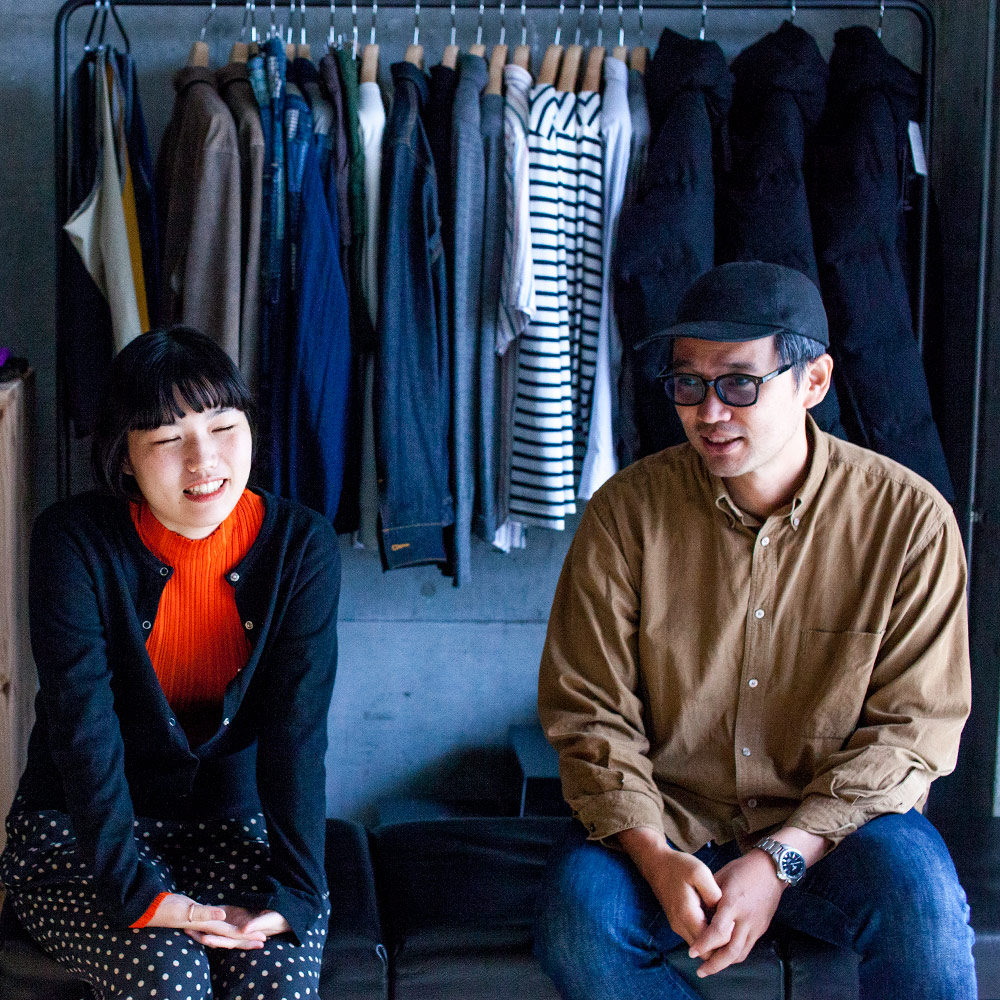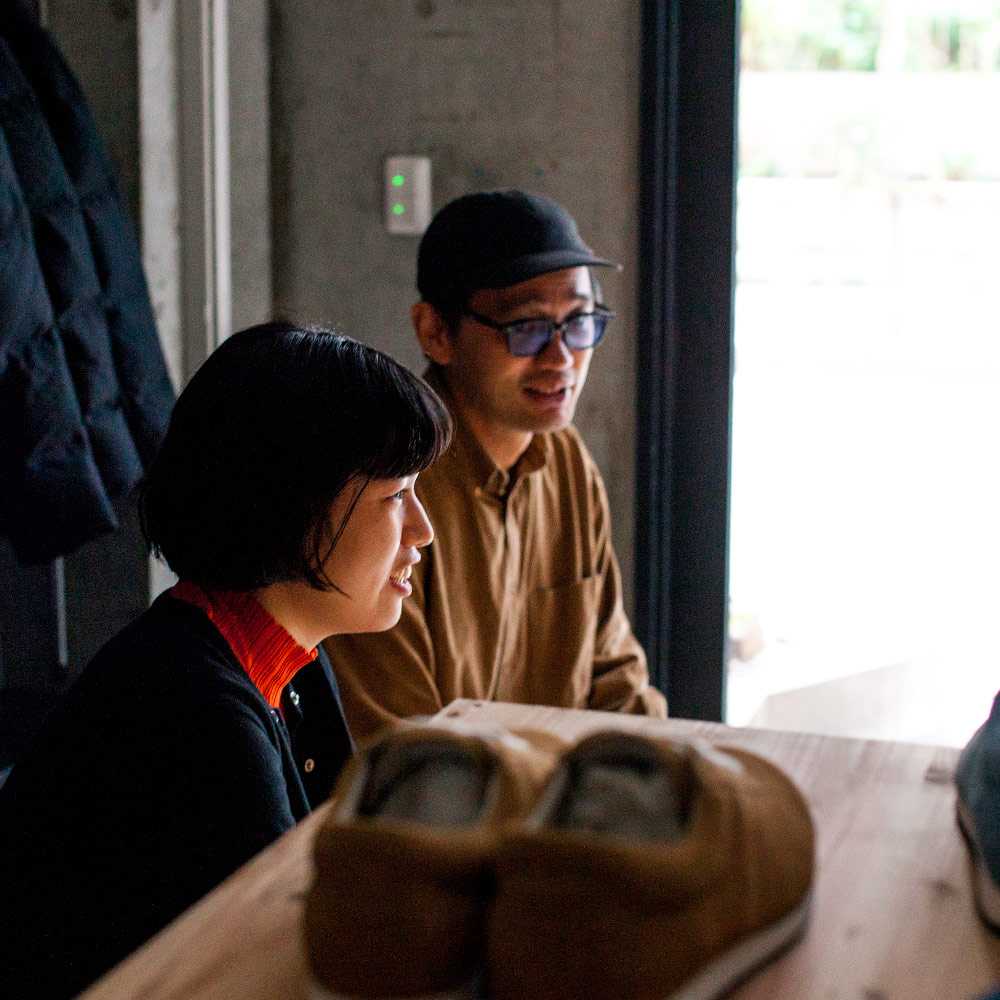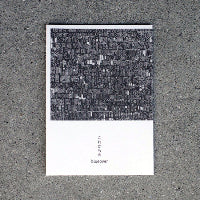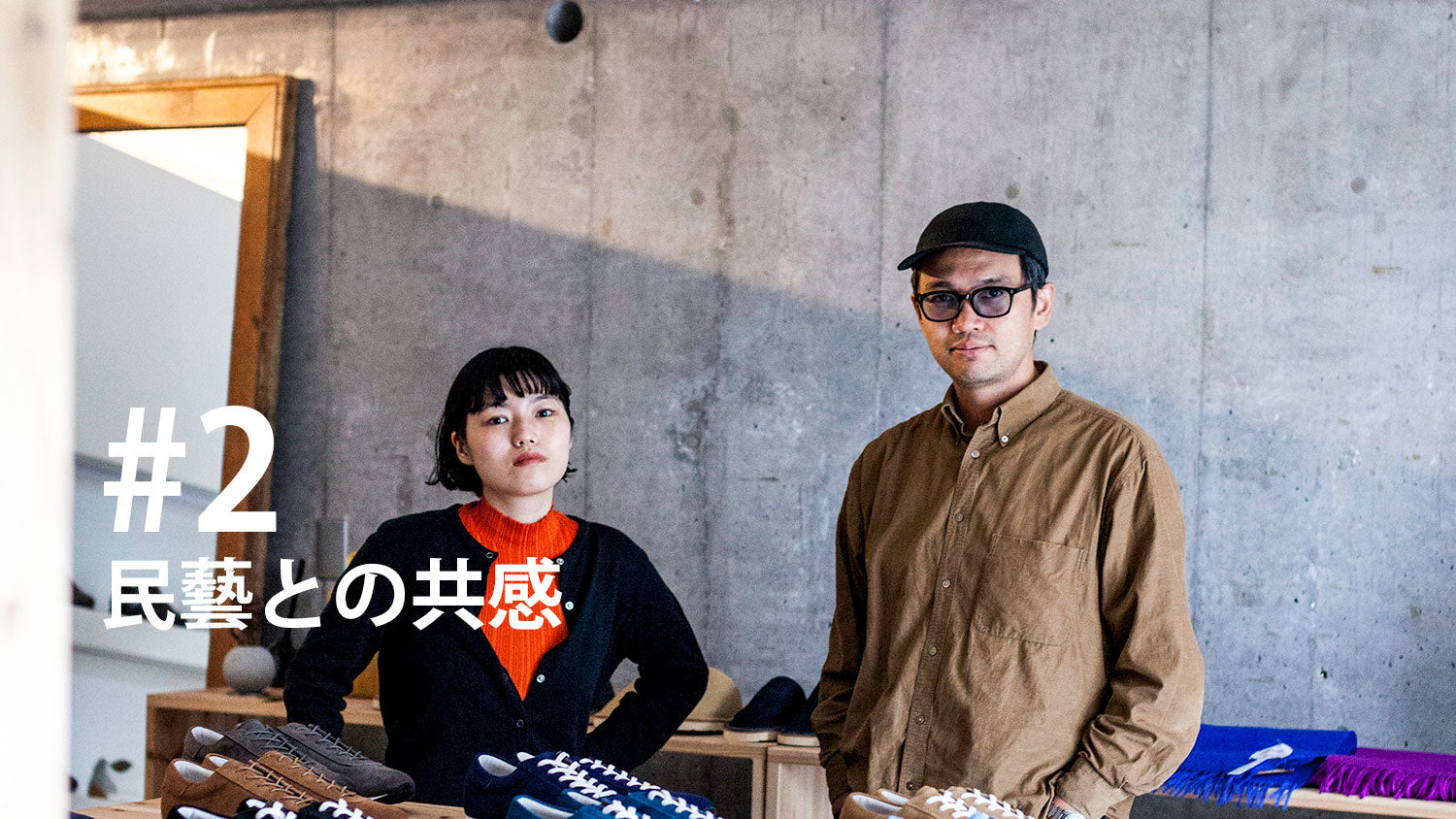Concept Deep Interview #01|Background of launch
Blueover has renewed its concept. Dig into the reason and meaning...
You buy something because you like the design or function. That was our normal. But that normal is now changing. For example, no matter how convenient or fashionable something is, what if you mass-produce more than you need and then mindlessly throw away the surplus? Even if I like the design and functionality of the product, if the brand's backbone and vision don't suit me, I won't buy it. That will become our next normal. I feel like that.
Not only that, but as we celebrate our 10th anniversary, Blue Over has updated its concept statement. It might be more appropriate to write a new concept statement that retains the philosophy but explains it in more detail. It embodies the background of the brand, the way we approach manufacturing, and the thoughts we want to share with those who wear our shoes.
[Full text of concept]
This concept sentence has over 2500 characters. As the title says, it's too long for a concept! It's a long post, but I've summarized it as concisely as possible in this number of characters. I think you can already feel the depth of the thoughts put into this sentence. On the other hand, there are many parts that I have not mentioned for the sake of brevity.
So, in this content, staff Egawa will dig into the content by referring to the concept statement bit by bit and asking questions to designer Watari, who wrote the brand concept statement.
Person introduction
Watari
The founder and designer of Blue Over. Tama's hobby is wood carving. My favorite car is the first generation Honda City E-AA.
Egawa
Blueover/Struct staff. Enjoys handicrafts on holidays. I would be happy if I could use what I made right away.
Egawa
The concept statement for Blue Over was finally completed after repeated writing and editing, but in order to somehow make it into an easy-to-read text, there were many parts that I had to cut off. In order to fully understand that part, I would like to ask Mr. Watari, the author, about important points about the intended purpose of the text.
Watari yes! Thank you for your help.
Egawa
Now, let's refer to the original text of the concept sentence.
Start
Blue Over is a sneaker brand born in Osaka. While I (Hitoshi Watari) was undertaking product design work as a freelancer, I began to have doubts about the cycle of product development and consumption.
Egawa
I have a question right away, but the literal translation of the word "product design" is "product design." Specifically, what kind of things were you designing?
Watari
I often worked on sporting goods and home appliances. At that time, the word UIUX was rare, and I mainly designed the exterior of products called hardware.
Egawa
In fact, both sporting goods and home appliances fall within the broad field of product design. At first glance, it seems surprising that the fields are so far apart, even though they are all done by the same designer. ...If I expand the conversation in this direction, I'll get off track, so I'll get back to the main topic.
While working on such products, I started to question the consumption cycle.
Watari
After all, companies have to create something exciting every year in order to get people to buy their products. I fully understand the logic behind this, and in some respects I think that's how it should be, but in this cycle, the act of producing things encourages instantaneous consumption. In that case, I thought that it would be easy for designs to be repeated as superficial cosmetics, making it difficult to create products with real value and making it difficult for people to understand them.

Egawa
I see. It's true that for me, the ``things'' themselves have not become old, but new things that are essentially the same are coming out all the time, and things that were created in the past seem relatively old. It makes me wonder if this cycle has become normal...
...Furthermore, after witnessing the decline of domestic manufacturing factories, in 2011 I started Blue Over, thinking that I could bring about change by throwing myself into this cycle.
Egawa
Was there any event that led you to launch Blue Over in 2011?
Watari
In the 2000s, many shoe manufacturers shifted to Asia as cost competition intensified due to the economic downturn. This aroused further cost competition, accelerated a more consumptive cycle, and the remaining small-scale factories in the country tended to be forced into increasingly difficult conditions. Ultimately, this will lead to an increase in the withdrawal or closure of small factories that have been manufacturing domestically. That's one of the reasons I saw it.
Egawa
Even before you launched Blue Over, you had connections with these small shoe factories. Does this include the factory that makes sporting goods that I mentioned earlier?
Watari
I agree. I was in and out of factories of all sizes. There, I spoke directly with the craftsmen and also with the president of the factory. Also, I could feel the situation described above in the atmosphere at the scene. Having witnessed the background of such production, what can I do as a freelancer myself? As I was thinking about this, I came up with the idea that I could take some action towards local production areas myself. The result was a blue over.
Egawa
That's how Blue Over was born, and that's why we've been particular about making our products in Japan for the past 10 years.
Now, let's move on to the next chapter and read the part about the background of Blue Over's shoe making.
shoe making background
Shoes are made up of many materials such as uppers, soles, laces, and insoles, all of which are manufactured through a division of labor at small-scale manufacturers. …
Egawa
This means, to put it simply...
Watari
This means that the upper, sole material, laces, and insole are all made in different places.
Egawa
Of course, there are differences in the "locations" where products are manufactured, but this does not mean that one large company has factories in various locations, but rather that the people and companies themselves operating each are different. Right?
Watari
that's right. Furthermore, when it comes to uppers, the company that sells the leather material and the company that processes that material into the shape of the upper are also different.
Egawa
Then, in the case of soles, there are companies that sell sole materials, companies that process them, and so on. There is actually a lot more division of labor involved in making shoes than what is written in the concept text.
Shoes really take a lot of time and effort...
Due to various reasons such as follow-up problems, the aging population, and cost competition overseas, it has become difficult to produce sneakers entirely in Japan, but Blue Over procures as much material as possible domestically. , is manufacturing. Although it is not a large scale project, we would like to make use of the connections between factories and the local community to ensure that we do not lose our domestic manufacturing sites. …
Egawa
I think this is something that was difficult to touch on in the concept statement, but what is the reason why it is becoming difficult to produce sneakers entirely within Japan? ?
Watari
I believe that the reason for this difficulty, to put it simply, is that ``It's not profitable to make and sell shoes domestically.That's why the number of shoe makers often disappear instead of increasing.''
Egawa
Taking it even further, why isn't it making money?
Watari
As I mentioned earlier, shoes are made by more hands than you might think. In other words, in order to complete a component, it takes time and technology to process it, as well as labor costs. Labor costs vary by country and region, so if you compare Japan and Asia, it is naturally cheaper in Asia. As a result, shoes made domestically are considerably more expensive than those made overseas.

Egawa
I see. To put it roughly, it means that you can't win price competition because of labor costs...
Watari
If that happens, there will be fewer brands that rely on domestic factories, and sales will not increase, so the number of places that make shoes domestically will not increase, but will decrease.
Egawa
I understand that, but even if you exclude manufacturers that have had large shoe factories in Japan for a long time, you can still see Japanese-made shoes here and there, not just blue-over shoes. Moreover, it is mostly cheaper than Blue Over.
Watari
That's right. For shoes, there is a method known as knockdown, in which the upper and sole are imported as semi-finished products and assembled domestically into shoes. The shoe factories that do this (the final step in making shoes) are relatively large and still exist in Japan.
Egawa
Made in Japan is also made in Japan, even in terms of its manufacturing method.
Watari
that's right. What this means is that the quality of the shoes is guaranteed in the final process of shoemaking, and by having Japanese manufacturers (factories) take charge of the final process, this can be seen as proof that the quality is guaranteed. The uppers and soles of our products are made in Japan, but from the customer's perspective, they are all made in Japan.
Egawa
I see. Under such circumstances, Blue Over is particular about producing all processes in Japan as much as possible.
Watari
Honestly, I think we need to think about what the point is in making everything domestically. Even if you look at apparel, where 98% of it is imported, it seems impossible to change the trend of the times. It is important to think about what actions we should take based on that.
Egawa
When you think about your next action, do you think that your thoughts on the local industry at the time you started the brand play a large part?
Watari
I think knockdown is also an option. However, even though the number is decreasing, as long as there are craftsmen who do small things such as cutting, sewing factories, leather crafting, insoles, and accessory material wholesalers in Japan, we will continue to stick to domestic manufacturing as much as possible. I want to. If possible, I would like to preserve the cultural assets that our ancestors have inherited from the past. We believe that these activities are the meaning of the brand.
Egawa
Looking at the time and effort that Mr. Watari and Mr. Higashi, the shoemaker at the brand, take in procuring materials and coordinating with factories, he says, ``Doing almost the entire shoe-making process domestically, like Blue Over, is... I don't think anyone can imitate it just a little bit. That's why I think Blue Over is a unique brand," but at the same time, I'm also worried that if we don't make it more popular, we won't be able to stop the gradual decline of the factory. To be honest...
Let's go back a little bit and look at the continuation of the original text.
…Why?
I was born and raised in the period from the late 1980s to 2000, when Japan was known as a manufacturing powerhouse.I myself was involved in product design and visited various factories. This is because we want to give back to the manufacturing industry that has supported us.
Egawa
This is a bit of a duplicate of what I said earlier, but this is the part that explains why Blueover carries out as much of the process as possible in Japan. Reading this, I feel that Blue Over doesn't just make shoes, but that the words "initiative" and "challenge" are appropriate.
Watari
After all, I think that the original experiences we have as children form our own identity. In that sense, the period from the 1980s to 2000 was the era of things. Back then, I grew up surrounded by things that excited me and inspired me. The reason I aimed for product design at my previous job was probably due to being influenced by this historical background.
Egawa
I was born in the 90's, so I remember feeling faint traces of that era lol.

Watari
When I enter a manufacturing site (factory), I love the smell of machinery and the scenery, which is very stimulating. It may sound like a big thing to say that I'm giving back, but I simply don't want to lose the place near me. I think that's just it. What can we do to avoid losing it? In that sense, I think Blue Over is not only a shoe, but also a word like initiative or challenge.
Egawa: That's right. As a member of the brand, I also want to continue boldly taking on challenges.
This time, I read through the concept text, ``The beginning of blue overcoat'' and ``The background of shoe making'', with the author, Watari.
In ``The Beginning of Blue Over,'' we learn that the question about the various consumption cycles surrounding the products that led to the start of the brand is connected to the background of the decline of the domestic shoe-making industry.
Next, in the ``Background of Shoe Making'' section, we will talk about the fact that shoe making is still made by many people in Japan, and while there is a sense of danger that it may be lost with the passage of time, we will continue to do everything possible domestically. I was able to receive the intention of creating. Watari doesn't want to lose the place he creates. What is the point in continuing to maintain this commitment?
Next time, I would like to take a look at the ``Mingei movement'' that Watari was said to have been influenced by, and find out how that philosophy is expressed in the design of Blue Over.



